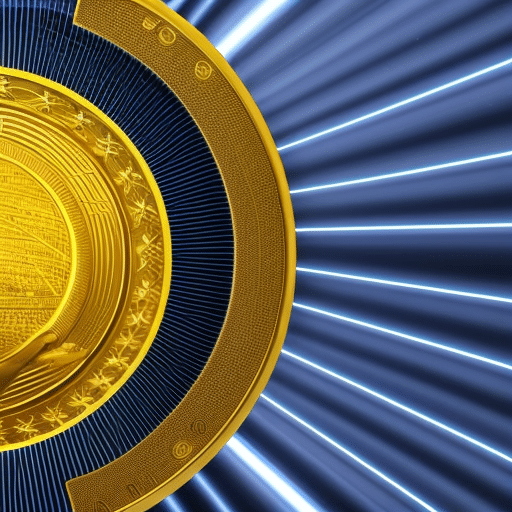Welcome to the world of PI coin! You are about to make a wise investment.
In order to ensure your transactions are secure, there are certain protocols and best practices you should be aware of.
In this article, we’ll explore the different ways you can ensure your PI coin transactions stay secure. We’ll discuss understanding security protocols, utilizing best practices, identifying potential threats, implementing encryption, and ensuring transaction verification.
Let’s get started!
Understanding Security Protocols
You need to know the ins and outs of security protocols to ensure your Pi Coin transactions are secure. Security protocols are the foundation of a secure and reliable online transaction. They provide the necessary protocols to protect the data and transactions that occur between two or more devices.
Security protocols are essential to ensure that your Pi Coin transactions are secure and not vulnerable to malicious attacks. They also provide rules that must be followed for data to be transmitted securely. Security protocols help to protect the data from interception by unauthorized persons, prevent data alteration, and establish trust between the sender and receiver.
Understanding the various security protocols available and ensuring that they’re implemented correctly is an essential part of securely transacting with Pi Coins.
Utilizing Best Practices
To ensure the protection of your financial assets, it’s essential to adhere to sound practices when securing transactions on Pi Coin.
Keeping your account information secure is of the utmost importance. Securing a strong password and regularly changing it is an essential step to take. Additionally, it’s wise to use two-factor authentication to further protect your account.
Whenever possible, using a hardware wallet to store your Pi Coins is another excellent measure to take. This method helps to keep your account safe from cyber-attacks, as the coins are kept in an offline device.
It’s also important to be aware of the potential risks and vulnerabilities that can occur when using a cryptocurrency. Staying up to date with the latest industry news and security updates is a great way to stay informed and keep your transactions secure.
Additionally, being aware of any scams or phishing attempts can help you to avoid falling victim to these malicious attacks. By following these best practices, you can help to ensure the secure transactions of your Pi Coins.
Identifying Potential Threats
Staying alert to potential threats is key to keeping your financial assets safe when using cryptocurrencies. Identifying potential threats is an important part of any security strategy. This means understanding the different risks associated with the technology, such as the possibility of data breaches, network outages, and malicious actors.
It’s important to stay up-to-date on security best practices and have a plan in place to respond quickly in the event of a security incident.
It’s also important to be aware of the limitations of any security system. Keeping up with the latest software updates is a must. Additionally, make sure to use strong passwords and two-factor authentication, which can help to secure your accounts and transactions.
Finally, be wary of any links or attachments you receive and take steps to protect your device from malware and other malicious attacks. By understanding the potential threats and taking the necessary steps to protect yourself, you can keep your assets secure when using Pi Coin.
Implementing Encryption
Encrypting your data is an essential step to keeping your financial assets safe when using cryptocurrencies. It ensures that a third party can’t access your data, even if they gain access to the server.
Pi coin uses a combination of two encryption algorithms: Advanced Encryption Standard (AES) and Secure Hash Algorithm (SHA). With AES, the data is encrypted using a 128-bit key, which is then decrypted at the user’s end.
SHA is a hashing algorithm that’s used to generate a unique code known as a digital signature. This digital signature is used to validate the data received by the user.
The combination of these two algorithms ensures maximum security for transactions on Pi coin. All transactions are encrypted with AES and verified by SHA. This makes it impossible for any unauthorized third party to read or modify the data being transferred.
Additionally, the digital signature generated by SHA also makes sure that the data is sent to the correct recipient and hasn’t been tampered with.
With these encryption protocols in place, Pi coin provides an efficient and secure way to transfer funds.
Ensuring Transaction Verification
Verifying transactions on Pi coin is essential for keeping your data secure, and it’s accomplished through a combination of two encryption algorithms.
One of the algorithms is known as a digital signature, which is a sequence of numbers that’s used to verify the authenticity and integrity of a file or data. This is done by taking a hash of the file or data and then encrypting it with a private key. This creates a unique signature that can be used to verify the authenticity of the data.
The other algorithm is known as public key encryption, which is a type of encryption that uses two keys: a public key and a private key. The public key is used to encrypt data, while the private key is used to decrypt it. This type of encryption ensures that only the intended recipient of the data can access it.
By combining these two algorithms, Pi coin is able to ensure that all transactions are secure and verified.
Conclusion
Securing transactions on PI coin is essential to ensure the safety of users and their funds. You’ve learned about different security protocols and best practices to identify and prevent potential threats.
Implementing encryption and transaction verification are critical steps to keep your data and funds secure. By taking the necessary steps to secure your pi coin transactions, you can rest easy knowing your money is safe and secure.
Don’t forget to continue monitoring and updating your security protocols to ensure your pi coin transactions are secure.
